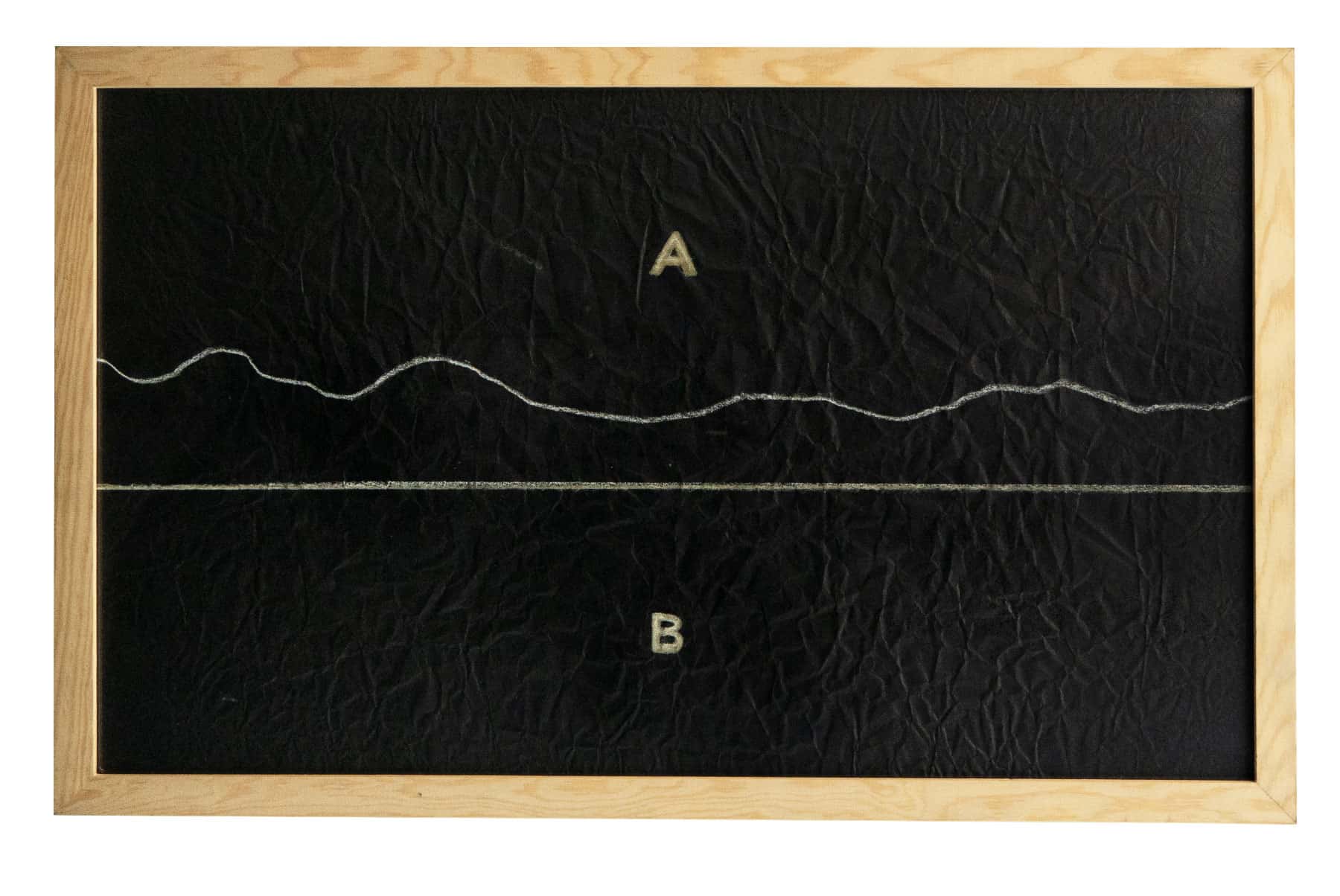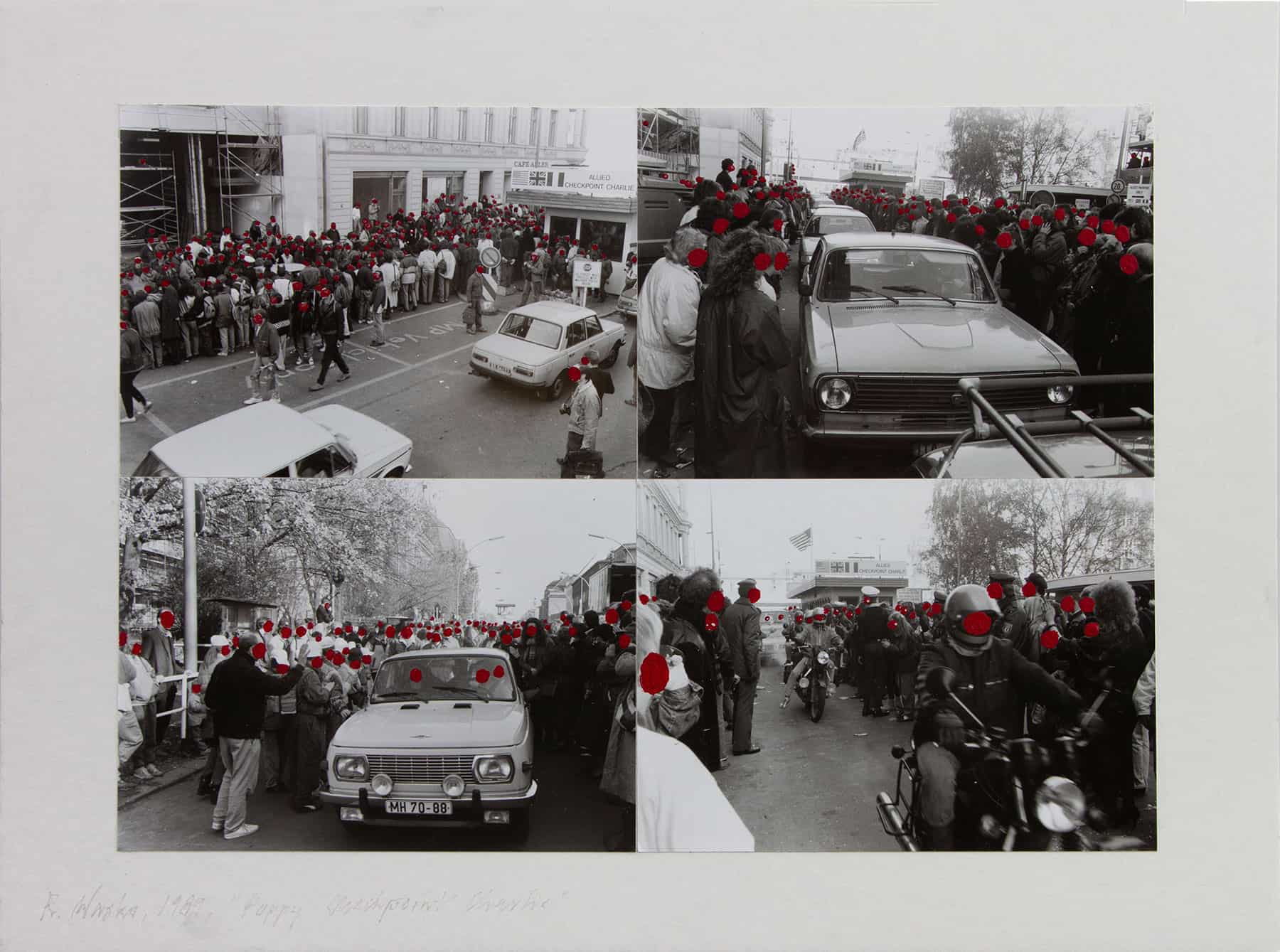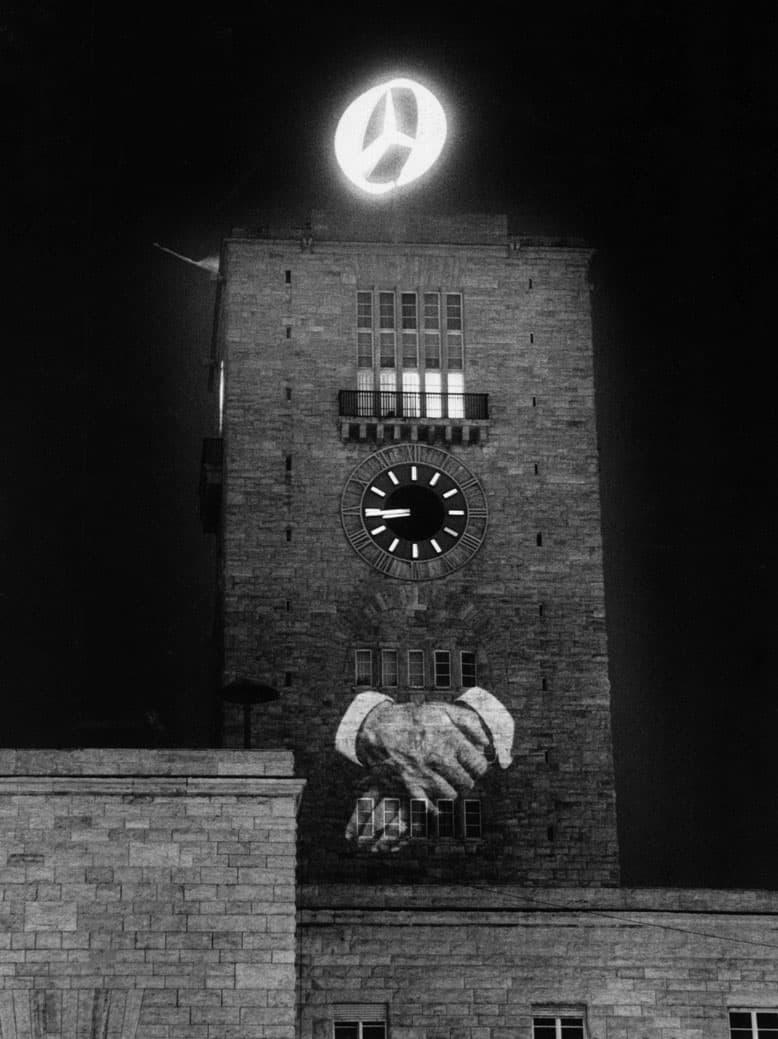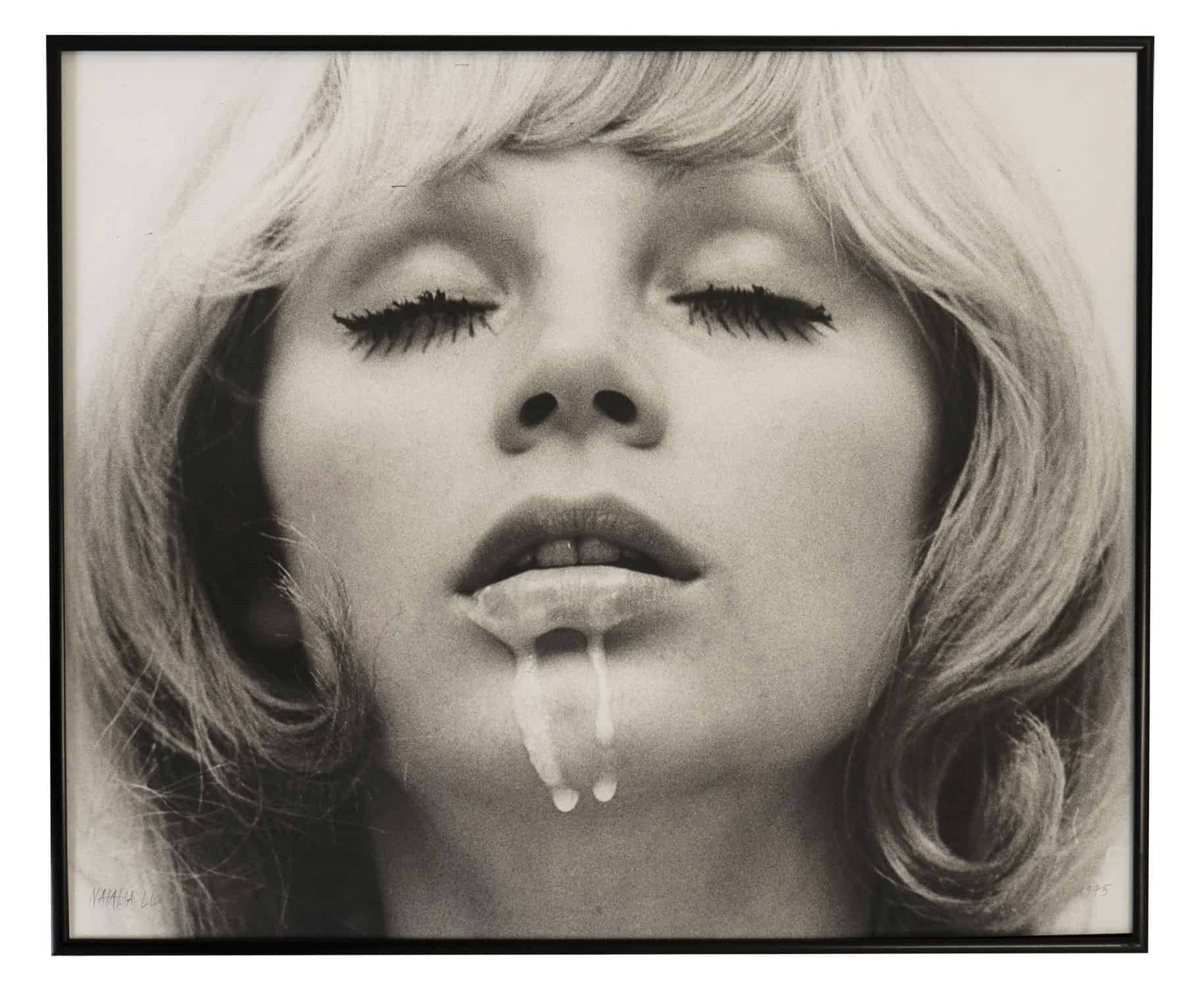The auction WHO ISN’T AFRAID OF THE AVANT-GARDE! takes place on 16 May and is organised by the Profile Foundation (Fundacja Profile). The Foundation presents leading names of the Polish avant-garde and offers works by the classics of the postwar Polish art. We selected 5 extraordinary works, which are going under the hammer. Which one is your favourite?
Jarosław Kozłowski, A / B, 1970
drawing, paper, crayon, 42,5 x 69,5 cm
signed, titled, dated on the reverse:
JAROSŁAW KOZŁOWSKI | „A / B”| 1970
Jarosław Kozłowski, who in 2016 represented Poland at the Sao Paulo Biennale, uses many media: drawing, light, sound, photography, installation, and artist’s books.
In the 1970s, the artist created purely linguistic works. He was interested in linguistic games, and transferred the rules of logical sentences to real life and vice versa. In his subsequent realisations, he analysed and conducted a discourse with art, mechanisms of perception, and self-reflection. The work which we present here is a characteristic example of the artist’s analytical investigations. A reflection on language, its referentiality, or lack of references to reality combines here with puns, jokes, paradoxes. The drawing was made shortly before the production and publication of one of Kozłowski’s first artist’s books, A-B. Lacking an obvious reading direction, with letters following different vectors, the book presented the relativism of logical games in various relations between the two letters. Almost the entire print run was confiscated by the secret police during a search of the artist’s home in 1972.
Ryszard Waśko, Poppy Checkpoint Charlie, 1989
four gelatin-silver prints, paper, cardboard, tempera, 32 x 43,5 cm
signed, dated, titled on the front
Ryszard Waśko is an intermedia artist, curator, animator of artistic life, and an educator. From the 1980s, the artist mainly created sculptural works, objects and installations in which he often referred to both personal and collective memory.
Works that we present here was taken shortly after the fall of the Berlin Wall, the photographs show Berliners crossing over from the eastern to the western part of the city through the famous Checkpoint Charlie, which during the DDR era was reserved for foreigners. The pictures complemented Hypothetical Checkpoint Charlie, a work earlier by a year and a half in which the artist had performed a metaphysical deconstruction of the Berlin Wall, its image subjected in a series of drawings to mathematical and geometric transformations up to being dispersed in an abstract line grid. The red dots marked on the pictures, associated by the author with poppy fields, were added to emphasise social emotions. He had first used the method in 1981 in photographs, taken from a balcony, of crowds of women attending the Hunger March organised by the Łódź Solidarity.
Krzysztof Wodiczko, Hauptbanhof, Stuttgart, 1983/2010
lambda print, paper, 45 x 30 cm
signed, dated on a label on the reverse of frame: Krzysztof
Wodiczko 1983/2010
ed. 5/6
A multimedia artist, often performing monumental projects in the urban space. His actions often touch current events such as presidential elections and armed conflicts. The ‘great’ themes are illuminated through the prism of the victims who are on the margins of society. It is no different in the case of this work. The original photograph depicts the artist’s projection on the monumental edifice of the main railway station in Stuttgart. On the lateral side of the clock tower, the artist displayed an image of the well-groomed hands of a businessman, corresponding with the Mercedes-Benz logo at the top of the tower. At the time, the Corporation hired the highest number of Gastarbeiters for their largest factory in Stuttgart. The city – an important railway hub – was a place of influx for immigrants looking for work, who gathered around the station.
Józef Robakowski, from the series: My Photo—Videomasochisms, 1989
color print, paper, 40 x 50 cm
signed, titled, dated on the reverse.
| J. Robakowski | J. Robakowski | from the series „Moje fotovideomasochizmy”
| 1989 r.
and stamp: Galeria Wymiany
vintage print
One of the classics of conceptual and intermedia art. Art historian, author of films, photographic cycles, video recordings, drawings, installations, objects and artistic actions. In the 1980s, he began to create one-shot films in which he equated the recording time with the time of projection and the camera performance. At that time he also introduced the term “own cinema” based on his observations of the immediate surroundings.
A series of photographs taken during a camera performance where the artist underwent simulated masochistic procedures. Manipulating various implements (an immersion heater, a pair of pliers, a hammer, a chain, a knife, a fork, an assortment of nails), he feigned staged acts of self-torture. Those tongue-in-cheek performances were dedicated to the „butchers of art” – performers who mutilated their bodies. The tight framing of the photographs and footage of the author’s grimacing face hearkened back to the Faces of Witkacy, whom Robakowski had made a film about ten years earlier. Dialoguing with the tradition of Witkacy’s photographic experiments and polemicising with the „art of inflicting pain”, Photo-Video Masochisms are among Robakowski‘s best-recognised works.
Natalia LL, Post-consumer Art, 1975 / 1983
gelatine-silver print, paper, foam board, 47,5 x 57,2
signed and dated on the front
signed on the reverse: Natalia LL
and label: NATALIA LL | POST CONSUMER ART | 1975
vintage print
Natalia LL is one of the most important female artists of the 1960s and 1970s. In her works, she touches such issues as carnality and sexuality, things that are intimate and exposed to public view. Very often, she leans over the role of woman’s corporeality reduced to a product in the era of consumer culture. In later works, she refers to the myths, pagan beliefs, showing her as a warrior, dealing with symbolically depicted masculinity. Post-Consumer Art belongs to a series of photographic works and films in which Natalia LL used the visual idioms of pop culture to produce provocative representations of “consumer eroticism”. A leading feminist artist, she was a pioneer in highlighting how advertising and market persuasions affect notions of female sexuality. Her serial portraits of female models, produced in the early 1970s, challenged viewers with ambiguous images of sensual corporeality starkly distinct from the conceptual rigours of the era’s art.











